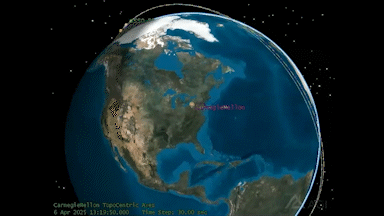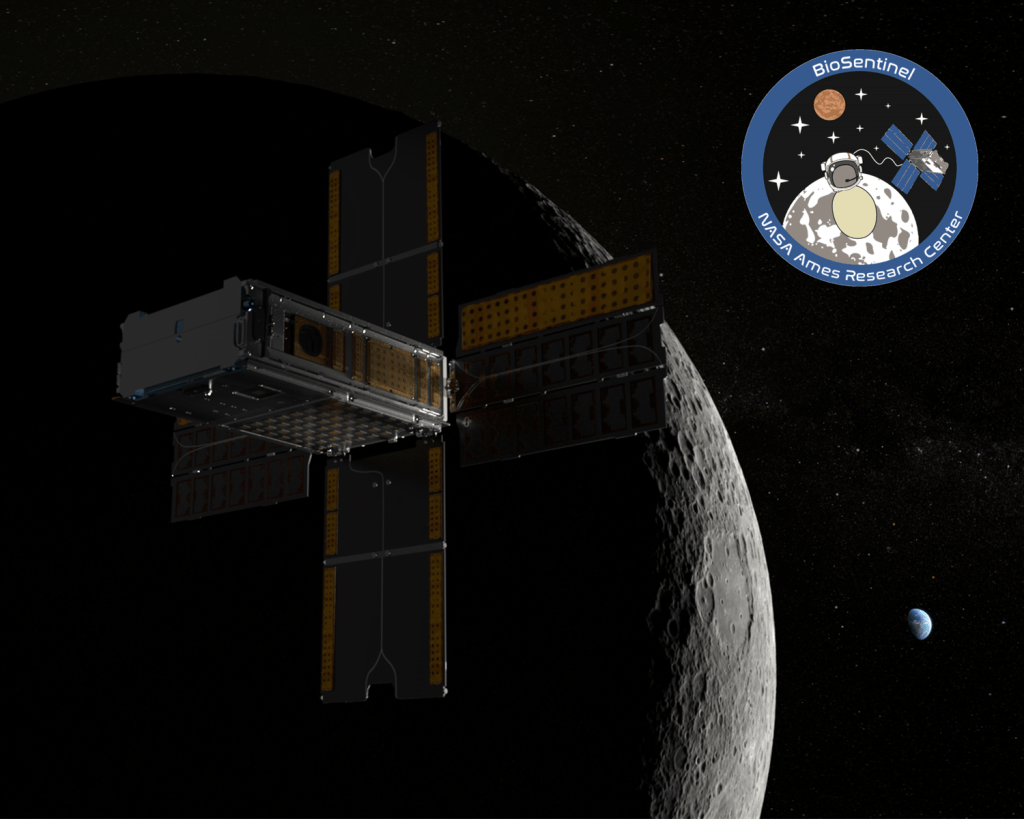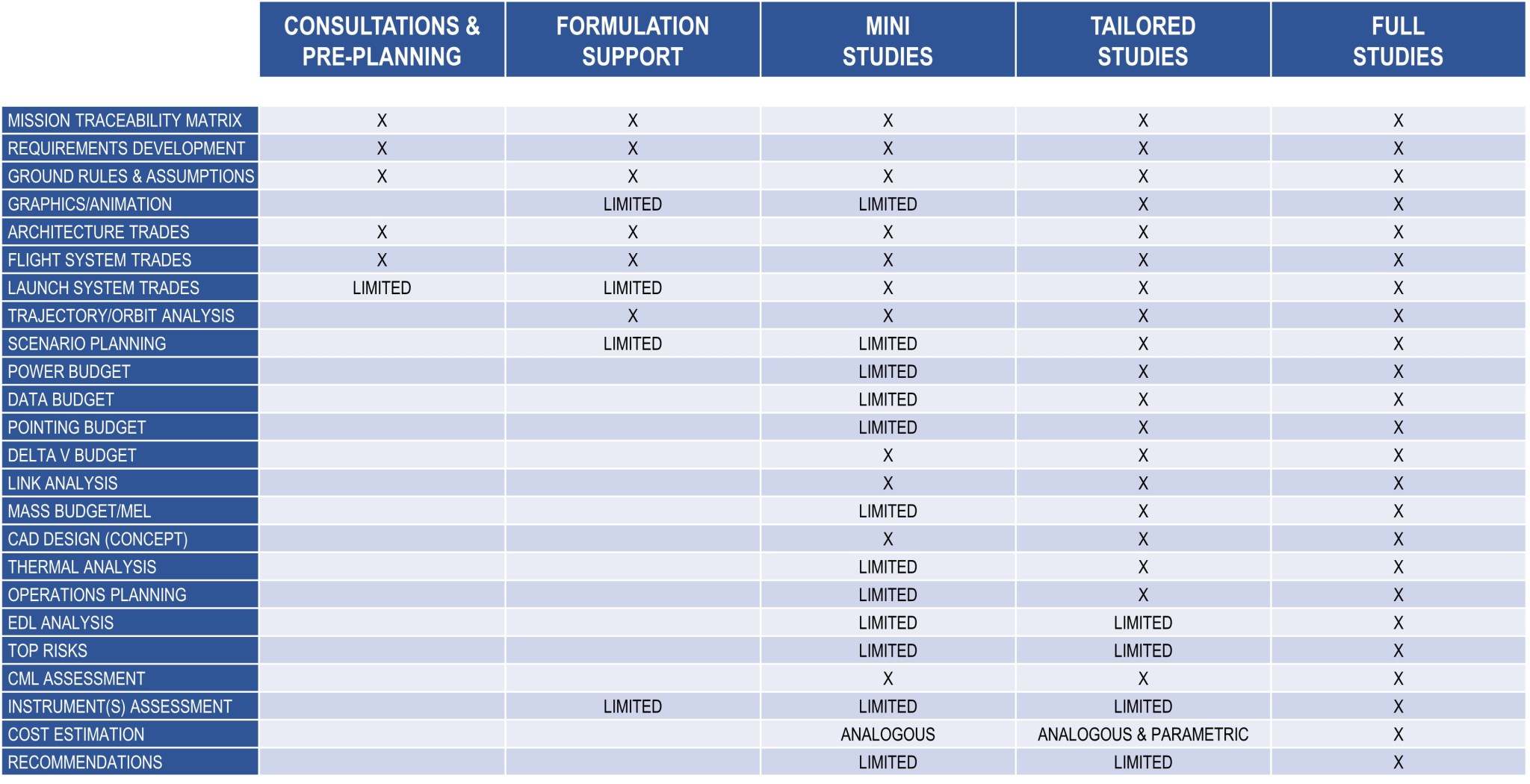


Mission Design Center
The NASA Ames Mission Design Center (MDC) is a multi-disciplinary, concurrent engineering Technical Area within the Spaceflight Division that specializes in conceptual mission design.
The MDC focuses on the following activities:
• Spaceflight mission concept development
• Concurrent Engineering Services including:
• Consultations & Study Pre-Planning
• Formulation Support
• Mini-Studies
• Tailored Studies
• Full Studies
While experienced in multiple design and mission implementation levels, the MDC focuses on cost-effective, small spacecraft missions.
Our Team
The MDC team uses subject matter experts matrixed in from across the Engineering Directorate and other Ames Directorates as needed. Along with the Team Lead and Lead Systems Engineer, these SMEs cover a wide range of expertise, including:
- Communications
- Structures and Mechanisms
- Configuration, Computer Aided Design (CAD)
- Attitude Determination and Control
- Mission Operations
- Electrical Power systems
- Mission Design, Trajectory Design
- Thermal Control
- Chemical & Electric Propulsion
- Command and Data Handling
- Cost Estimating
- Risk
Products and Capabilities
The MDC products can be tailored to support customer needs, such as Pre-Phase A, early concept feasibility and maturation (CML 1 to CML 4), proposals, and project reviews.
Our spaceflight mission concept idea lab provides all the needed support to Customers to understand if their idea for a spaceflight mission is feasible within set constraints, technical and programmatic alike. We also provide concurrent engineering services, infrastructure, training, and trained personnel, for spaceflight mission concept development.
Featured Projects

Starling
Starling will demonstrate technologies to enable multipoint science data collection by several small spacecraft flying in swarms.

Nodes
The Nodes mission concept was an opportunity to leverage the excellent work done on EDSN, and extend the systems at low cost and effort,

BioSentinel
Launched on Artemis-1, BioSentinel is a 6U CubeSat that carries a biology experiment into deep space for the first time in 50 years.

IRIS
IRIS Interface Region Imaging Spectrograph observes how solar material moves, gathers energy, and heats up as it travels through a little-understood region in the Sun's lower atmosphere.


































